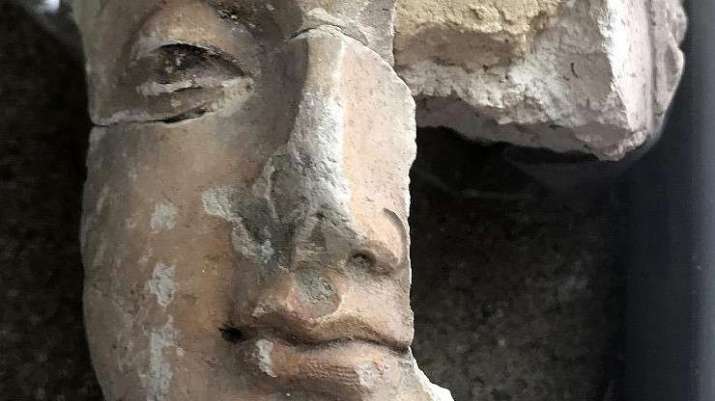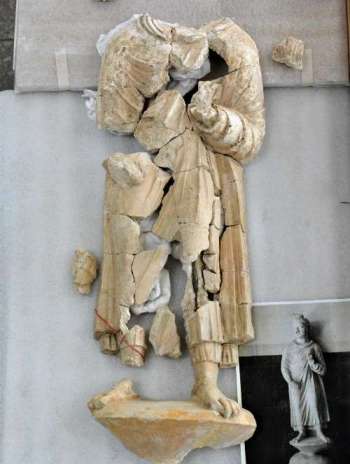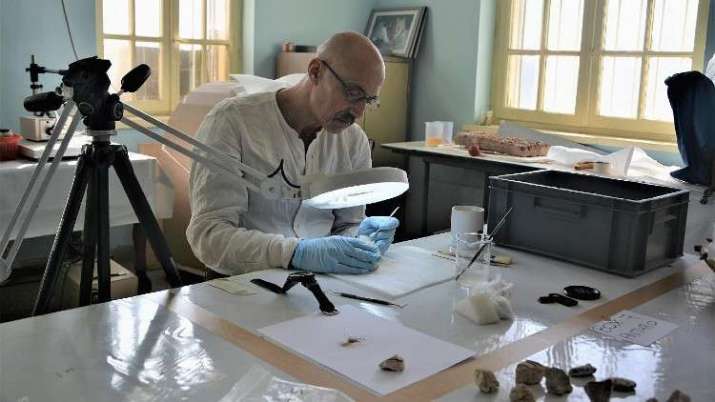
Researchers from the University of Chicago’s Oriental Institute are working with conservators from the National Museum of Afghanistan to repair some of the earliest physical depictions of the Buddha, which were destroyed in 2001 when the Taliban shattered religious images at the museum. The team, supported by grants from the US Embassy in Kabul, are carefully reassembling statues from more than 7,500 fragments that had been saved in trunks in the museum’s basement after the rampage of the Taliban.
Many of the statues come from Hadda, in Afghanistan, a Greco-Buddhist archaeological site that dates to the ancient region of Gandhara, a principle node of the Silk Road connecting India, China, and the Greek and Persian worlds. The statues date to a period spanning from the first to sixth centuries CE and include standing sculptures as well as tableaus ranging in size from two meters to only a few centimeters tall.
“When they were broken, we lost a part of history—an important period of high artistic achievement—which these objects represent,” said Mohammad Fahim Rahimi, director of the National Museum of Afghanistan. “They are the only pieces remaining from the archaeological sites; Hadda was burned and looted during the 1980s, so these pieces at the museum are all we have left. By reviving them, we are reviving part of our history.” (U Chicago News)
The images depict the Buddha in a manner familiar to the earliest statues known to scholars today, draped in folded fabric reminiscent of that of the gods of ancient Greece or Rome. Other Greco-Roman influences can be seen in the facial features and the muscular molding of the chest and shoulders. Since 2012, the National Museum of Afghanistan Cultural Preservation Partnership has been working to restore lost artifacts and to establish a bilingual database to fully inventory the museum’s collections.
The laborious process of reassembling the statues, fragment by fragment, has been painstaking. “It’s more like trying to assemble pieces from 30 different jigsaw puzzles that have all been dumped together—without the pictures from the boxes,” said Gil Stein, professor at the Oriental Institute and a leading expert on the rise of social complexity in the ancient Near East. (U Chicago News)

While some objects had been recorded in the past, many of the museum’s records were destroyed in Afghanistan’s civil war. Earlier this year, however, researchers discovered a collection of photos and data about the Hadda objects in an old museum office.
Alejandro Gallego López, the Oriental Institute’s field director in Afghanistan, believes that these records will allow them to reconstruct up to 150 statues. “It’s really exciting work, especially when you can get a few different pieces together,” he said. “It’s very rewarding to bring them back to life. This rich cultural heritage belongs to the people of Afghanistan,” (U Chicago News)

The goal of the work is to not only return the intact statues to the people of Afghanistan, but also to ensure that museum staff on site are trained to catalogue and preserve the nation’s treasures. “Foreigners and grants come and go, but they’ll still have the knowledge,” noted Gil Stein. (U Chicago News)
See more
Shattered Buddhist statues restored with help from the OI (U Chicago News)














